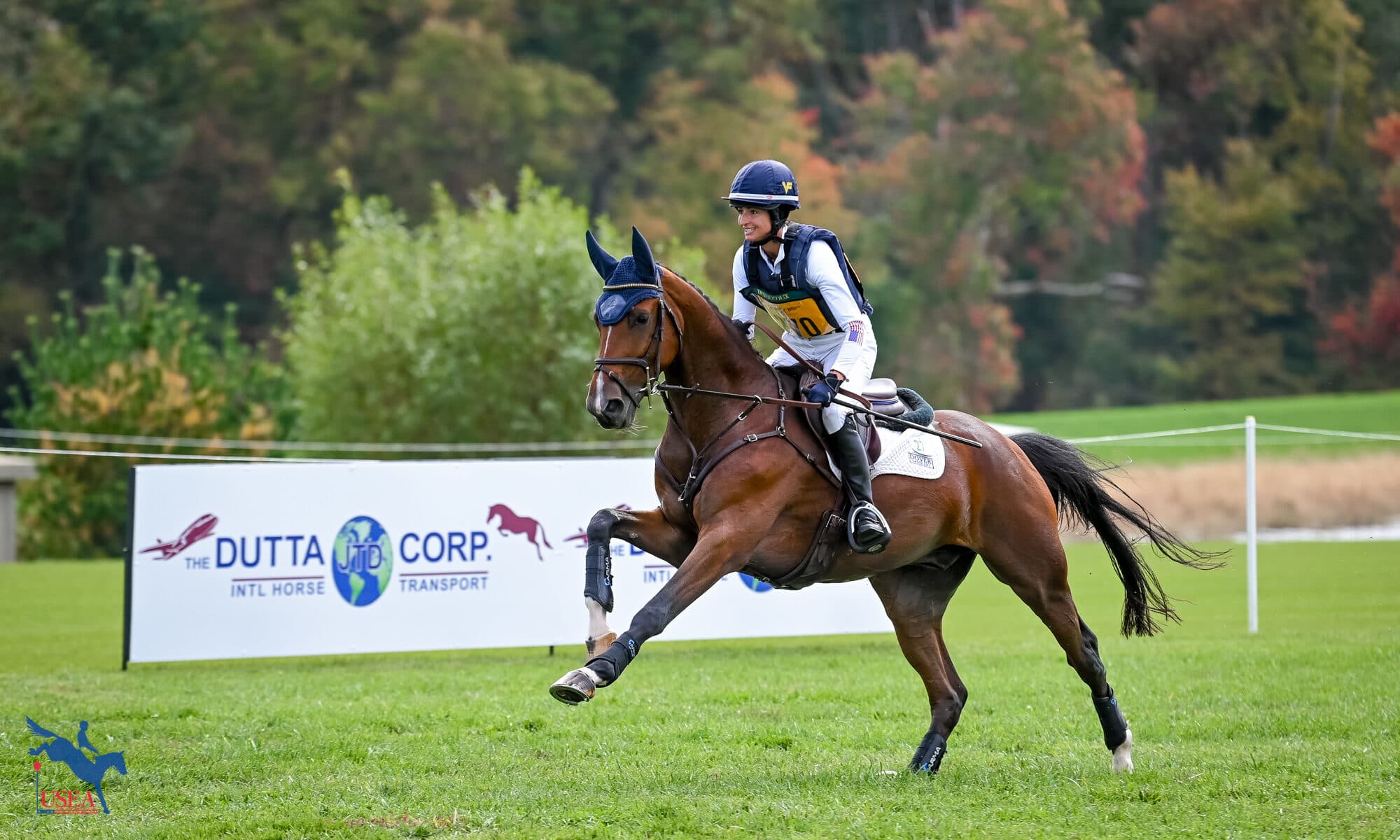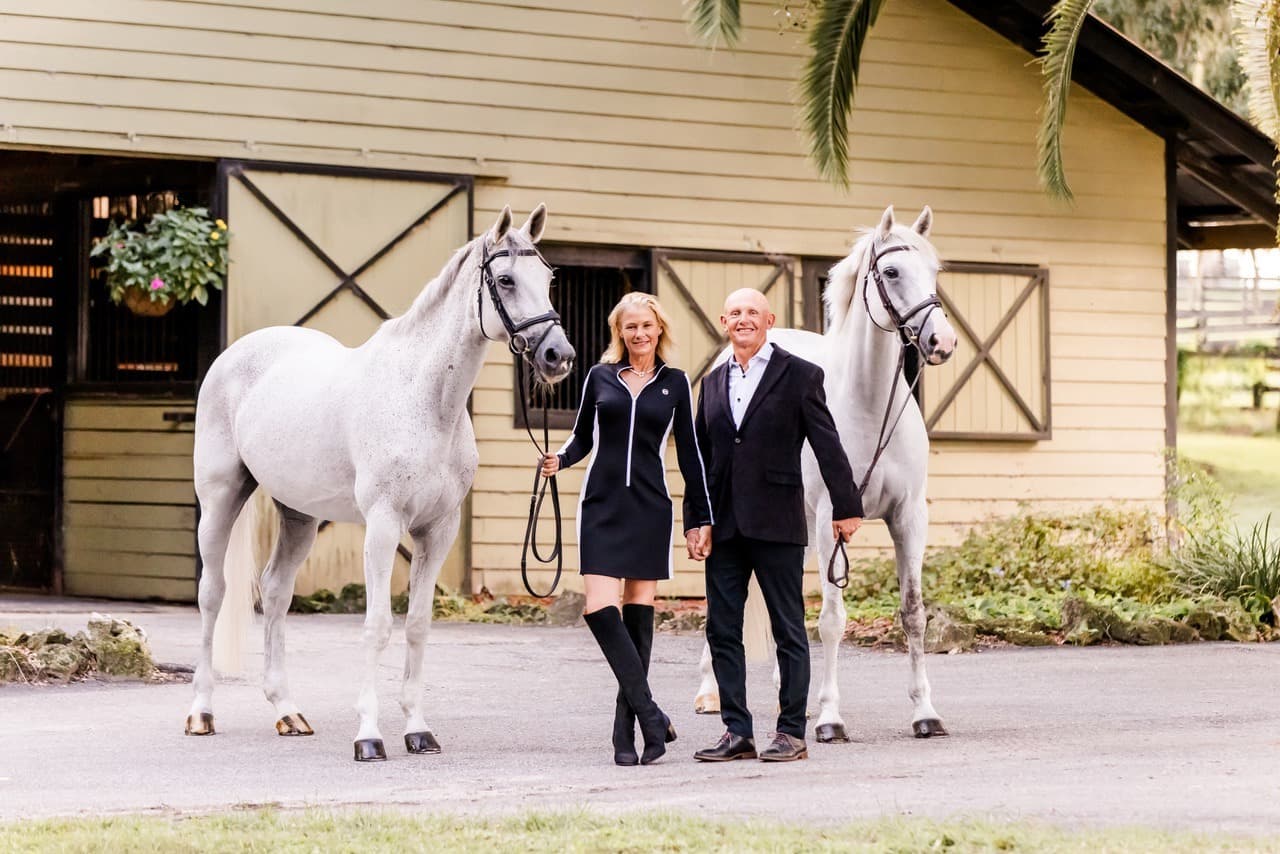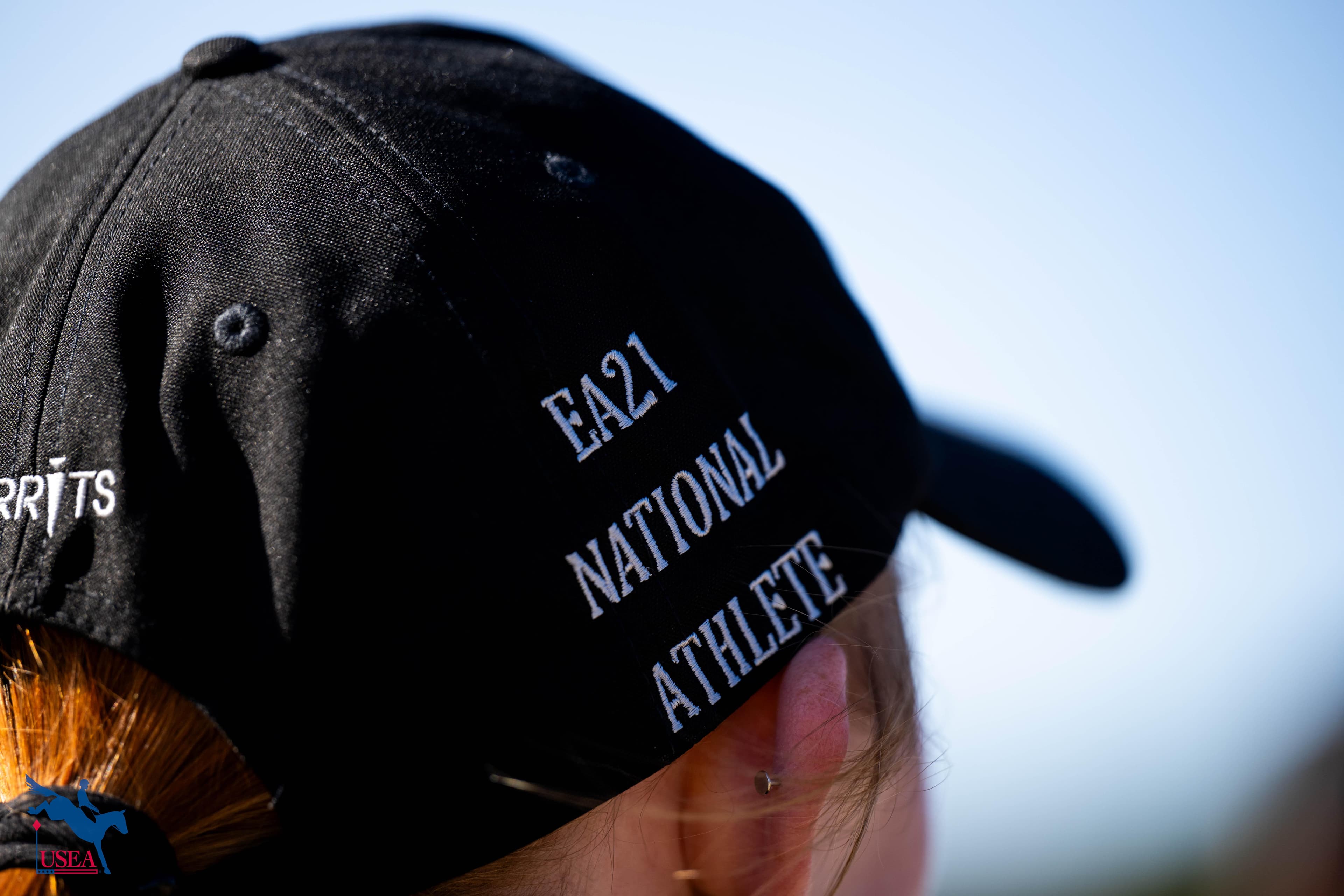Young Event Horse Scoring 101

Since 2005, the USEA Young Event Horse (YEH) classes for 4- and 5-year-olds have showcased rising stars in the eventing world, and many graduates of the program have gone on to compete at the highest levels of the sport. Caroline Pamukcu’s 2023 Pan American Games (Santiago, Chile) gold medalist and 2024 Paris Olympics team horse HSH Blake and Jennie Brannigan’s long-time partner Twilightslastgleam are two such notable athletes, among countless others, who took part in the YEH program early in their careers.
You might be familiar with some of the past competitors, but how well do you know the scoring system? Whether you’re a rider looking to aim your up-and-coming youngster at some new outings, or you’d just like to follow along with the upcoming Dutta Corp. USEA YEH Championships this month, here’s everything you need to know about how horses are scored in these classes. To help break it down, we caught up with Marilyn Payne, the chair of the YEH Committee and the head of USEA’s YEH New Judge Education Program.
The main thing to understand is that the scoring is based out of 100 possible points—the higher the points, the better. Here are the total maximum points for each section:
Dressage: 30
Show Jumping: 15
Cross-Country: 30
Overall Jumping Evaluation: 15
General Impression: 10
This scoring system is only for the Championship qualifying events (you can view the scoresheets here). The YEH Championships scoring system differs slightly, but more on that below. First, let’s take a closer look at each of the sections to see exactly what the judges are looking for and how they’re scored.
Section 1: Dressage
30% of the final score
Like a normal event, the first phase is dressage. While there is a specific test designated for YEH competitors (see the 4-year-old test and the f5-year-old test), it’s scored differently than a typical dressage test. Rather than an individual score for each movement, the judge will rate each gait on a score of 1-10 (scores can also include tenths of a point). Some of the qualities they’re looking for include rhythm, impulsion, ground cover, elasticity, and suppleness.
“The judges are trying to find the best gait that the horse has—we want the rider to really show off the horse,” said Payne. “A rising trot tends to be better. We want the rider to allow the horse to go freely forward. If a horse spooks in a corner or is disrupted by something, it doesn’t greatly affect the score. What matters is the quality of their gaits. As the judge, it’s as if you’re looking at a horse to buy. You want to say, ‘Wow, look at that trot!’ or ‘That canter really covers the ground and is so balanced.’ ”
In the dressage test, the walk is at the end—riders then walk out of the ring on a loose rein, similar to a typical dressage test. “From judging USEF dressage, the walk is usually in the middle of test,” said Payne. “And that walk is never as good as the very end when you see that rider salute, drop the reins, and walk out of the ring. You often think, ‘That’s the walk I wanted to see!’ ”
Since the canter is arguably the most important of the three gaits for an event horse, Payne sais, it has a double coefficient, meaning the score is multiplied by two. The rideability is also a double coefficient. “You can see horses that get up to the five-star level because they are so rideable, and they really try and want to please,” she explained. “They’re just so genuine, so those horses can score right up there with the fancy movers.”
Section 2: Jumping
Show jumping: 15% of the final score | Cross-country: 30% of the final score | Overall jumping evaluation: 15% of the final score
The next phase is the jumping phase, which is broken up into two sections: five show jumping fences and 10 cross-county fences. Each jumping effort is given an individual score from 0 to 5 (0 meaning a refusal, and 5 meaning excellent). Judges can also award half percentage points.
Early on in the program, fences were not judged individually. “What happened is that if a fabulous horse had an uncharacteristic refusal, but still performed well in the rest of the jumping phase and earned a top placing, riders and owners of other horses were upset,” Payne explained. “How can that horse beat me when it had a refusal, they’d wonder? So, we transitioned to scoring individual fences. That way if you had a refusal, you will get a 0 for that one fence, but you will get higher scores on the rest, and the average will end up pretty good.”
The cross-country portion follows immediately after the five show jumping fences. “As soon as they land off that last show jump, they should gallop—it doesn’t have to be fast, but you should see a difference in their stride,” said Payne. “The pace should increase, and the length of the stride should increase. You want to see a difference in how the horse goes.”
There are two key aspects that the judge is looking for when evaluating each fence: “One is power and scope, and the other is style,” says Payne. “Overall, it’ll present a nice-looking picture: its knees are up, and it’s using its neck, back, and hind end. But the most important part of an event horse is that they have to be able to jump—they have to have that power. You want to think that the horse could easily jump higher.
“You don’t want them overjumping the cross-country jumps, because then they’re not efficient,” Payne continued. “They’re wasting time in the air and then landing heavier—and that’s not going to keep them sound in the long-term. But in the show jumping portion, if they overjump that’s okay. We don’t want those rails down.”
There is also a section for the judge to add comments. “You could see a comment like: ‘Great technique; he was very balanced and scopey for the show jumping, but for cross-country, he’s overjumping his fences too much.’ Or vice versa: ‘He was a little sloppy and not very careful in the show jumping, but he really improved in the cross-country portion. When the horse saw the solid fences, they really paid attention and used themselves well and showed off well.’ Every horse is different.”
Section 3: Gallop
Lastly, the judge will assess the horse’s “open gallop.” “After the last cross-country fence, you’ll want to see the horse land and go happily forward, not landing and running off like a maniac,” said Payne. “Just a long, effortless, efficient stride. You want to see how their gallop covers the ground.”
Next is the “between fences” section of the gallop portion—here the judge scores how the horse performs before and after each fence. This focuses on the horse’s ability to go forward, but also maintain their rhythm and pace, adjust their balance, and safely jump out of stride. Flying changes aren’t necessary—breaking to a trot to change leads is not penalized—but horses who offer up changes naturally will catch the judge’s eye and may earn better marks in this section.
The final scored aspect of the gallop section is the rideability: honing in on the horse’s confidence, response to aids, attitude, and learning ability. “You want it to look as if the horse is doing it himself,’” said Payne. “When the rider says ‘Go,’ the horse goes, and when they want them to come back, they do. You’re looking to see that they don’t have any issues with the contact, and that they’re willing, and brave, and stay nicely in front of the rider’s leg.”
Finally: General Impressions
10% of the final score
Last, but certainly not least, is the general impression score. This is a standalone section where the judge comments on the horse’s potential as a four- or five-star level horse; not an average of all the other scores.
“Maybe the horse had a stop, or it slipped, or it bucked or shied,” said Payne. “But do I think this horse could still reach the top levels with the correct rider and training? That’s where the judge will put their overall impression of the horse, no matter what scores were given in the earlier sections. That’s where you can say whether or not that the horse is going to make it to the top.”
Obviously not every horse has upper-level potential—some may earn high scores in the top sections for good gaits and rideability, but in this section, you might see comments like: “Lovely horse, well trained, great attitude, but it doesn’t appear to have the scope for the upper levels. It will make a fabulous amateur or young rider horse.”
Scoring Notes
If you’re curious about how these scores translate to a horse’s eventing potential, here’s how Payne explains it: “A rough guide we often give to judges in their training is if you’re going to mark them below a 7, you think that horse could do Novice and Training, but you don’t know if it’ll do Preliminary. If you give a 7 or above, obviously you think it can do Prelim. If you give a 7.5 to an 8, then you think it might be able to do Intermediate. An 8 means you think the horse can probably do Advanced, and a 9 means you think that horse could go all the way to the top.
“So, if you’re going to win at the Championships, then you’ve got to be in the 80s at least—there might even be some in the 90s,” she continues. “But if you’re in the 70s, you’re not going to be in the top placing, not when you have 50 horses that are qualified.”
Each fall, there are two championships—one on the East Coast and one on the West Coast. In order to qualify for the finals, on the East Coast, horses must earn one score of 75% or higher at any YEH qualifier event to be eligible for the East Coast Championships. To be eligible for the West Coast Championships, horses must earn one score of 70% or higher at any YEH qualifier event.
A Word About the Championships
One major change in the format of the Championships is that there’s an added conformation section. In the early days of the program, this phase was also part of the qualifiers, but now it’s only part of the finals for a number of reasons. “For one, it took so much time for everyone,” explained Payne. “Riders are busy, and you don’t want to make the young horses stand around all that time. Plus, to try and train a judge to do the dressage, jumping, and conformation? It’s a lot. So, we wait until the Championships and have an expert conformation judge come in for that portion.” It’s also easier on the organizers of the qualifiers—they don’t need to set up a place for the horses to jog and can keep the show moving along quicker.
The conformation section is 10% of the final score, and the dressage portion drops from 30%, as it is in the qualifiers, to 20%. “We didn’t want to reduce the jumping to a lesser percentage,” said Payne. “We want the jumping to be 70%. That’s the most important part of being an upper-level event horse—not the flatwork.”
Be sure to catch the Dutta Corp. USEA YEH East Coast Championships at the MARS Maryland 5 Star at Fair Hill in Elkton, Maryland, on Oct. 17-18. The Dutta Corp. USEA YEH West Coast Championships at Twin Rivers Ranch in Paso Robles, California, will be held on Oct. 25-26.
About the USEA Young Event Horse (YEH) Program
The Young Event Horse (YEH) Program was first established in 2004 as an eventing talent search. Much like similar programs in Europe, the YEH program was designed to identify young horses aged four- and five-years-old, that possess the talent and disposition to, with proper training, excel at the uppermost levels of the sport. The ultimate goal of the program is to distinguish horses with the potential to compete at the four- and five-star levels, but many fine horses that excel at the lower levels are also showcased by the program.
The YEH program provides an opportunity for breeders and owners to exhibit the potential of their young horses while encouraging the breeding and development of top event horses for the future. The program rewards horses who are educated and prepared in a correct and progressive manner. At qualifying events, youngsters complete a dressage test and a jumping/galloping/general impression phase. At Championships, young horses are also evaluated on their conformation in addition to the dressage test and jumping/galloping/general impression phase. Click here to learn more about the Young Event Horse Program.
The USEA would like to thank ARMA, Bates Saddles, Schneiders Saddlery, HorseWeek, Kerrits, Parker Equine Insurance, SmartPak, Standlee, and The Jockey Club for sponsoring the Young Event Horse Program. Additionally, the USEA would like to thank The Dutta Corp., Title Sponsor of the Young Event Horse Championships.














